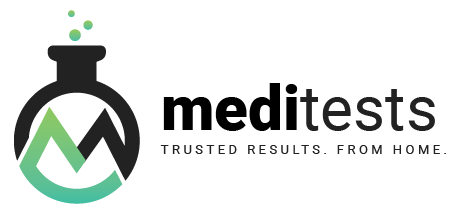Why is Employee Drug Testing Important?
Employee drug testing helps maintain a safe, productive, and drug-free workplace. It detects illegal substance use and alcohol abuse, reducing workplace risks. Studies show that 70% of illicit drug users in the U.S. are employed, with 1 in 12 employees using drugs regularly.
Key Benefits of Employee Drug Testing:
- Enhances workplace safety by reducing accidents caused by impaired employees.
- Increases productivity by minimizing absenteeism and performance issues.
- Reduces costs associated with health care, workers' compensation, and lost productivity.
- Helps comply with legal and industry-specific regulations.
Common Types of Employee Drug Tests
There are several methods for drug testing, each serving different needs:
- Urine Tests: The most common method, detecting recent drug use.
- Hair Tests: Provides a longer detection window, identifying substance use over weeks or months.
- Oral Fluid (Saliva) Tests: Detects recent drug use, often used for on-the-spot screening.
- Breath Tests: Primarily for alcohol detection.
- Sweat & Blood Tests: Used in specialized situations, offering accurate results but requiring more resources.
Financial Impact of Drug Use in the Workplace
According to the U.S. Department of Labor, substance abuse in the workplace costs U.S. companies $75 to $100 billion per year due to:
- Missed workdays
- On-the-job accidents
- Increased health care costs (Employees who use drugs claim 16 times more in health benefits)
What Substances Do Drug Tests Detect?
Standard employee drug tests screen for five commonly abused substances:
- Amphetamines – Linked to aggression and hyperactivity.
- Marijuana – Reduces reaction time and productivity.
- Cocaine – Can cause erratic and violent behavior.
- Opiates – Includes heroin and prescription painkillers.
- PCP (Phencyclidine) – Causes hallucinations and impaired judgment.
Types of Employee Drug Testing Programs
1. Pre-Employment Drug Testing
- Conducted before hiring to prevent substance abusers from joining the company.
- Requires clear communication and written consent from candidates.
2. Post-Accident Drug Testing
- Used when an employee is involved in a workplace accident.
- Helps determine if drugs or alcohol contributed to the incident.
3. Random Drug Testing
- Conducted unpredictably to deter employees from using drugs.
- Uses a computerized selection process to ensure fairness.
- Legal regulations vary by state, so employers must verify compliance before implementation.
4. Reasonable Suspicion Testing
- Performed when an employee shows visible signs of impairment.
- Requires supervisor training to recognize drug-related behavior.
5. Return-to-Duty Testing
- Conducted before reinstating an employee who previously failed a drug test.
- Ensures compliance with workplace safety policies.
How to Implement a Drug Testing Program
1. Define Your Drug Testing Policy
- Outline when and how tests will be administered.
- Include procedures for handling positive results.
2. Ensure Legal Compliance
- Consult a Medical Review Officer (MRO) to oversee testing.
- Follow federal, state, and local laws governing workplace drug testing.
3. Choose a Testing Provider
- Select a reliable third-party testing service that offers on-site or off-site testing.
4. Educate Employees & Supervisors
- Provide training on drug policies and the risks of substance abuse.
- Use seminars, workplace posters, and educational materials to reinforce awareness.
5. Offer Employee Assistance Programs (EAPs)
- Help employees struggling with substance abuse seek treatment rather than face termination.
- Improves morale and fosters a supportive workplace culture.
Establishing a Drug-Free Workplace
A successful drug-free workplace program goes beyond testing. Employers should:
- Develop a clear policy outlining expectations and consequences.
- Provide supervisor training to recognize substance abuse signs.
- Educate employees on the dangers of drug use and the company’s stance.
- Offer rehabilitation and assistance programs to support affected employees.
Additional Benefits of a Drug-Free Workplace
- Lower workers' compensation costs (many states offer discounts for certified programs).
- Improved employee morale and retention.
- Reduced legal liability from drug-related workplace incidents.
Final Thoughts
Implementing an effective employee drug testing program protects both employers and employees. By maintaining a safe, productive, and drug-free workplace, companies can reduce risks, lower costs, and foster a healthier work environment.


















































































